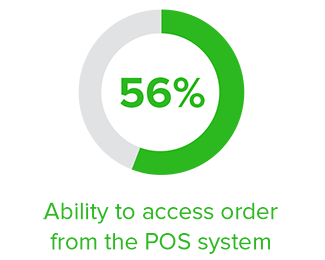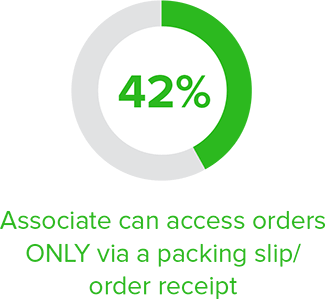Part 2 in a 3 Part Series | Part 1, Part 3
Freestyle Solutions partnered with the e-tailing group to conduct independent research to understand how mid-market retailers have adopted omnichannel from an execution standpoint in terms of process and technology. Rather than surmise what the experience would be like, the e-tailing group developed a hands-on mystery shopping research study where visits to 25 retailers would reveal the hard results.
Our methodology involved a pre-store setup that considered two types of shopping experiences:
- buy online pickup in-store and
- place an order for return at a retail location.
Information Accessibility
Shoppers come to the store for many reasons and customer information access is at the core of a convenient shopping experience. Today, securing this information is not a smooth process. The dependency on the customer to provide an order receipt, given antiquated systems, is simply not shopper friendly. Every retailer must be able to access an order based on a multitude of search criteria. After 20 years of ecommerce, consumers are at the point where they feel this issue should have been resolved.
During the survey process several retailers told us straight out that their systems are not always connected and lack access to information forcing them to work in silos. On several occasions, store associates expressed frustration regarding daily customer requests that go unresolved due to system limitations. The information inaccessibility extends much deeper when stores carry thousands of products and the average job tenure of an employee is six months and the average age is 19 years old. This research tested this assumption to determine the following findings.
The Numbers
- The ability to access order from the POS system was available in just over half the retailers (56%) with customer name as the predominant lookup (71%), phone number on order (29%) and order history, email or item purchased (21%) were also options available at select retailers.
- Associate can access orders ONLY via a packing slip/ order receipt at 42% of retailers.
- 3 out of 4 retailers had an online wish list available on their website, which we signed up for in advance of our visit, yet none were accessible within the store.

The Opportunity
- Retailers need to get a central repository for order, customer and product information. Once you have these requirements centralized, the goal will be to integrate all your customer and employee facing systems to the central repository for consistency and accuracy of data visibility. This will require an order management system (OMS) and/ or customer relationship management (CRM). If your product information does not live within these systems today, then you might need to invest in a product information management (PIM) system. If you do not have these systems in place it is the best place to start any omnichannel initiative.
- The POS, in most cases, is a dumb terminal. Accessing information implies intelligence. When customers browse your website, visit your stores or shop on a mobile device the goal is to inspire them to purchase by providing information relevant to them. The problem is that only the online sales channels can provide an unlimited amount of information about product. That said, only the stores can provide a personal touch. By arming employees with mobile devices that offer access to order, product and customer information, you get the best of both worlds – a knowledgeable employee that can add a personal touch. It also enables employees to move from behind the counter and into the aisle where customer service requests and buying decisions are made.
- Accessing order information is the most critical of all since the customer has already made a commitment to trust a retailer, and ultimately, their brand. The order contains inventory, product and customer information which can tell a store employee a lot about the customer.
View the full research report, Why Omnichannel is Critical for Retailers of All Sizes.






